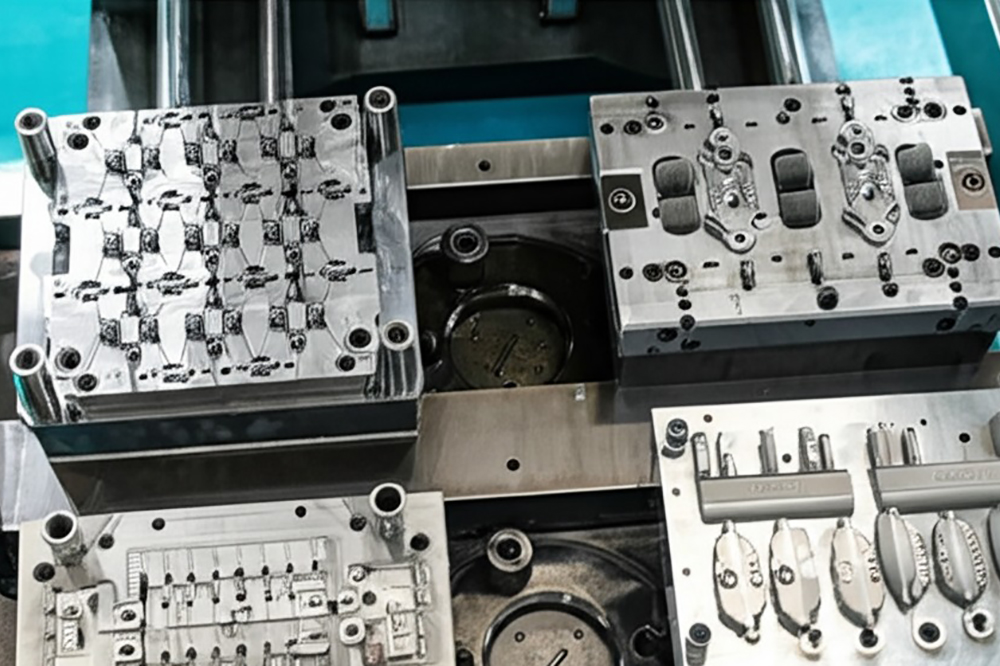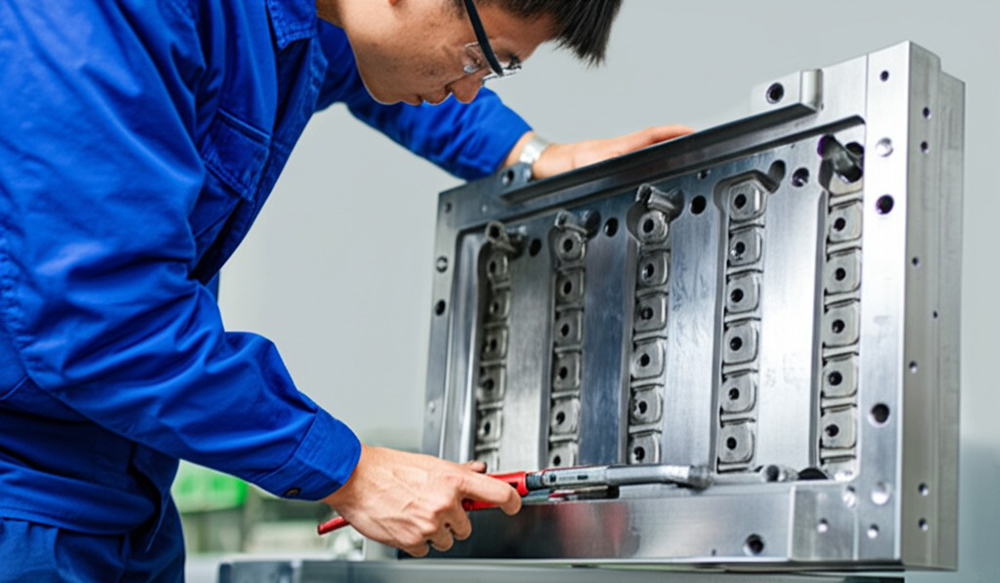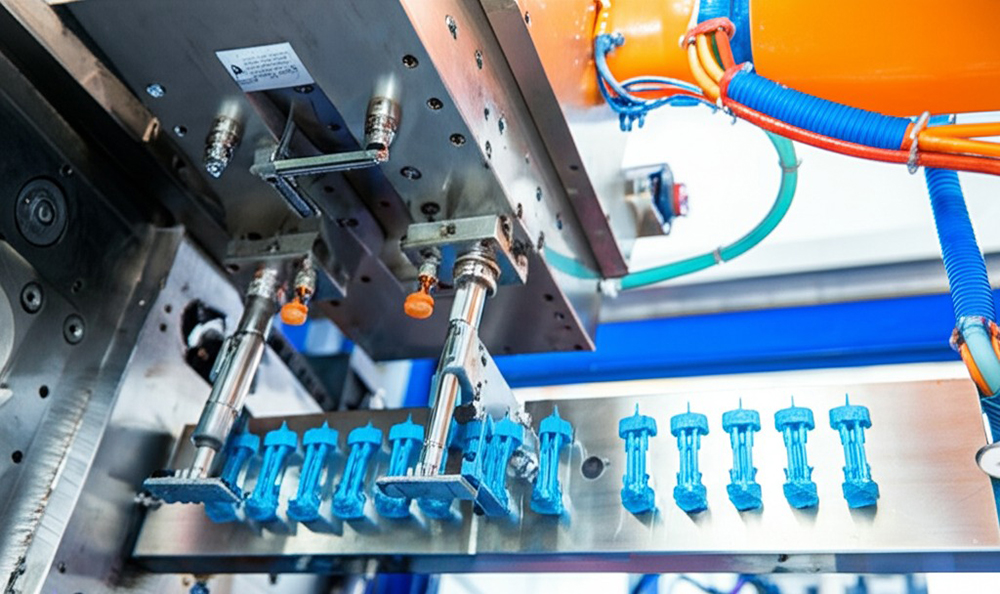The Benefits of Multi-Cavity Injection Molding
Introduction:
In today’s fast‐paced manufacturing environment, efficiency, consistency, and cost-effectiveness are crucial for success. Traditionally, many injection molding parts are made using single-cavity tooling, where each mold core and cavity produces a single component per shot. However, with the advent of china multi cavity injection molding, manufacturers can now produce multiple parts simultaneously with a single injection, drastically enhancing production capacity and reducing cycle times.
This article explores the benefits of multi-cavity injection molding, detailing how this advanced technology leverages high precision and innovative design to offer substantial advantages over single-cavity processes. As a leading provider in the field, Huazhi expertise in china multi cavity injection molding ensures that your products meet the highest quality standards while achieving significant cost savings and efficiency improvements.
What is Multi-Cavity Injection Molding?

1.1 Defining Multi-Cavity Injection Molding
Multi-cavity injection molding, sometimes referred to as multiple impression molding, is a process where a single mold contains more than one cavity. Instead of producing one component per shot of molten plastic, multi-cavity molds enable the simultaneous production of several identical components. This approach is standard practice in the injection molding industry, including at renowned suppliers like Huazhi.
-
Key Concept:
• A multi-cavity mold is designed to produce multiple parts in one cycle.
• It contrasts with single-cavity tooling, which produces only one part per shot.
1.2 How Multi-Cavity Injection Molding Works
In multi-cavity injection molding, the mold is engineered with multiple cavities along with corresponding runners, gates, and sprues to ensure uniform filling. Critical design factors include:
-
Even Filling:
• Ensuring that molten plastic is distributed evenly across all cavities.
• Precise gate and runner placement is essential. -
Consistent Pressure:
• Each cavity receives the same pressure, guaranteeing identical parts. -
Material Flow:
• The design must account for a more circuitous material flow compared to single-cavity molds.
Multi-cavity injection molding is a sophisticated process that demands high precision at every stage, from the initial mold design to the final part ejection. Manufacturers using china multi cavity injection molding benefit from the expertise that ensures each cavity fills evenly and consistently.
Evolution and Types of Multi-Cavity Molds
2.1 The Evolution of Multi-Cavity Molding
Historically, injection molding was performed with single-cavity molds due to design simplicity. However, as demand for higher production volumes grew, manufacturers turned to multi-cavity molding to meet market needs. Advancements in design software and CNC machining have allowed for the precise engineering required to produce multi-cavity molds that maintain tight tolerances and high-quality finishes.
-
Historical Overview:
• Early molds were simple and limited in capacity.
• Technological advancements led to the development of multi-cavity molds, significantly boosting production efficiency.
2.2 Types of Multi-Cavity Molds
Multi-cavity molds can be categorized into two main types, each serving different production needs:
Multi-Cavity (or Multi-Impression) Molds
-
Definition:
Contain multiple identical cavities for producing a single component in mass production. -
Usage:
Ideal for high-volume production of components like bottle caps, automotive parts, or consumer electronics. -
Design Considerations:
Symmetry is key to ensure even filling across all cavities. -
Capacity:
Molds can contain anywhere from 2 to 128 cavities, depending on product size and production requirements.
Family Molds
-
Definition:
Contain multiple cavities that produce different components in a single mold. -
Usage:
Often used for low-volume production where multiple parts are required, such as hobbyist model kits. -
Challenges:
Asymmetry can make it difficult to achieve uniform filling, increasing the risk of defects.
In both cases, multi-cavity molds require careful design to ensure optimal material flow and consistent quality across all parts. Companies specializing in china multi cavity injection molding utilize advanced design tools and high precision CNC machining to overcome these challenges.
The Benefits of Multi-Cavity Injection Molding
3.1 Increased Production Efficiency
One of the most significant advantages of multi-cavity injection molding is the dramatic boost in production efficiency:
-
Simultaneous Production:
Multiple parts are formed with each shot of plastic, reducing cycle times. -
Enhanced Throughput:
With a multi-cavity mold, manufacturers can produce four, eight, or even more parts per cycle compared to a single-cavity mold. -
Reduced Cooling Time:
While the mold design may take slightly longer, the overall production cycle is significantly shorter.
3.2 Cost Savings
Multi-cavity injection molding can lead to considerable cost reductions:
-
Lower Per-Part Costs:
Despite higher initial mold costs, mass production significantly lowers the cost per part. -
Reduced Machine Time:
Fewer cycles are needed to produce the same number of parts, saving energy and labor. -
Optimized Material Use:
More efficient use of raw materials minimizes waste.
3.3 Improved Batch Consistency and Quality
Consistent quality is paramount in manufacturing:
-
Uniformity:
Every part produced in a cycle is identical, ensuring excellent batch-to-batch consistency. -
Quality Control:
Advanced design and precision control in china multi cavity injection molding help maintain strict tolerances and high-quality finishes. -
Enhanced Surface Finish:
The process can result in superior aesthetic and functional surface qualities, critical for high-performance components.
3.4 Potential for Enhanced Color Consistency
When color consistency is crucial, multi-cavity molding can offer advantages:
-
Uniform Coating:
With simultaneous filling, the parts often exhibit more consistent color and finish. -
Optimized Process Parameters:
Precise control over the injection parameters ensures that every cavity receives the same amount of material and pressure.
Design Considerations for Multi-Cavity Injection Molding
4.1 Critical Design Elements
Designing a multi-cavity mold requires careful attention to several key aspects:
-
Sprue and Gate Placement:
The location of sprues, gates, and runners must be optimized to ensure even distribution of molten plastic. -
Material Flow:
The flow path should be designed to minimize pressure drops and ensure all cavities fill uniformly. -
Cavity Symmetry:
Especially in multi-cavity molds, symmetry is critical to maintaining consistent quality.
4.2 Challenges in Multi-Cavity Design
-
Increased Complexity:
More cavities mean a more complex design, which can lead to longer design and prototyping phases. -
Potential for Uneven Filling:
Without proper design, some cavities might fill faster than others, resulting in defects. -
Higher Initial Costs:
Multi-cavity molds are typically more expensive to produce than single-cavity molds, though this is offset by lower per-part costs in mass production.
4.3 Tools and Techniques for Optimized Design
-
Advanced CAD/CAM Software:
Used to design precise molds and simulate material flow. -
High Precision CNC Machining:
Essential for fabricating the complex geometries required in multi-cavity molds. -
Iterative Prototyping:
Allows for testing and refinement of mold designs to achieve optimal performance. -
Quality Assurance Systems:
Continuous monitoring ensures that design adjustments meet the required tolerances and performance standards.
Applications of ChinaMulti Cavity Injection Molding
5.1 High-Volume Production in the Automotive Industry
Automotive manufacturers often require large quantities of identical components:
-
Benefits:
Multi-cavity molds significantly boost production efficiency for parts like bottle caps, trim pieces, and small interior components.
5.2 Use in Consumer Electronics
Consumer electronics demand high precision and consistency:
-
Application:
• Multi-cavity injection molding is ideal for producing small, intricate components such as casings, connectors, and buttons. -
Advantage:
Ensures each part is identical, which is critical for quality and assembly.
5.3 Medical and Defense Components
In industries where precision is non-negotiable, multi-cavity molds are invaluable:
-
Medical Devices:
Used for producing implants, housings, and other components with strict tolerances. -
Defense Applications:
High-volume production of consistent, reliable parts is crucial for defense manufacturing.
5.4 Family Molds for Low-Volume Production
Family molds are an alternative for producing multiple distinct parts:
-
Definition:
Unlike multi-cavity molds (which produce identical parts), family molds contain cavities for different parts. -
Application:
Commonly used in hobbyist model kits, where various components are molded together. -
Considerations:
Design complexity increases due to the need for varied cavity sizes and shapes.

Benefits of China Multi Cavity Injection Molding
6.1 Enhanced Efficiency and Throughput
The primary benefit of multi-cavity injection molding is the dramatic increase in production efficiency:
-
Multiple Parts per Cycle:
Producing several components simultaneously reduces cycle time significantly. -
Streamlined Cooling Process:
More parts are cooled together, further shortening the overall production cycle. -
Mass Production:
Enables rapid production of identical parts, making it ideal for large-scale manufacturing.
6.2 Significant Cost Savings
While multi-cavity molds require a higher initial investment, the long-term savings are substantial:
-
Lower Per-Part Cost:
Increased efficiency and reduced cycle times decrease the overall cost per unit. -
Reduced Labor and Machine Time:
Fewer cycles mean less energy and labor are required, contributing to cost savings. -
Economies of Scale:
Large production volumes offset the higher upfront mold costs.
6.3 Improved Consistency and Quality
Consistency is critical in high-volume production:
-
Uniform Parts:
Every shot produces identical parts, ensuring batch-to-batch consistency. -
Superior Surface Finish:
The process delivers smooth and consistent surfaces that meet stringent quality standards. -
Enhanced Material Utilization:
Optimal design reduces waste and ensures that all cavities are filled evenly.
6.4 Better Color and Finish Uniformity
For products where appearance matters, multi-cavity molding offers:
-
Consistent Aesthetics:
Uniform flow and pressure across cavities result in identical color and finish. -
Reduced Variability:
Critical for applications such as consumer goods, where visual appeal directly impacts marketability.
Challenges and Design Considerations
7.1 Design Complexity
While multi-cavity injection molding offers numerous benefits, it also presents unique challenges:
-
Increased Design Effort:
Designing a mold with multiple cavities requires careful planning and advanced simulation. -
Optimizing Sprue, Gate, and Runner Placement:
Ensuring even material flow across all cavities is complex and requires precise engineering. -
Balancing Pressure and Flow:
Uneven distribution can lead to defects, so attention to detail is crucial.
7.2 Production and Setup Considerations
-
Longer Mold Design Time:
Multi-cavity molds take longer to design and test, but this is offset by higher production efficiency. -
Higher Initial Costs:
The upfront investment is greater; however, it is justified by lower per-part costs in mass production. -
Material Flow Challenges:
Complex flow paths must be optimized to ensure all cavities fill evenly and consistently.
7.3 Solutions and Best Practices
-
Advanced Simulation Software:
Use state-of-the-art CAD/CAM tools to simulate material flow and adjust design parameters. -
Iterative Prototyping:
Rapid prototyping helps refine the mold design to achieve optimal performance. -
Rigorous Quality Control:
Continuous monitoring and testing ensure the final product meets strict tolerances and quality standards.
Future Trends in China Multi Cavity Injection Molding
8.1 Technological Innovations
The field of multi-cavity injection molding continues to evolve with technology:
-
Integration with Digital Technologies:
Automation, real-time data analytics, and IoT devices improve process control and efficiency. -
Eco-Friendly Plating and Coating:
Innovations in environmentally friendly materials and processes are becoming more prevalent. -
Enhanced Simulation Tools:
New software allows for more accurate predictions of material flow and stress distribution in multi-cavity molds.
8.2 Market and Industry Trends
-
Increased Adoption in Mass Production:
As demand for cost-effective, high-quality components grows, more industries are turning to multi-cavity molding. -
Global Supply Chain Integration:
Manufacturers worldwide are leveraging the expertise of top china multi cavity injection molding providers to stay competitive. -
Continuous Improvement in Tooling:
Advances in CNC machining precision and mold design continue to push the boundaries of what is possible in injection molding.
Applications and Industry Use Cases
9.1 Automotive Components
-
Mass Production:
Multi-cavity molds are widely used for producing identical components like bottle caps, brackets, and trim pieces. -
Efficiency Gains:
High production efficiency ensures rapid assembly line output.
9.2 Consumer Electronics
-
Small, Precise Parts:
Ideal for components such as connectors, casings, and buttons. -
Consistent Quality:
Ensures uniformity across high-volume production runs.
9.3 Medical Devices
-
High-Precision Components:
Used in devices that require extremely tight tolerances and flawless surface finishes. -
Reliability and Safety:
Consistent production quality is critical for patient safety.
9.4 Packaging Applications
-
Large Volume Production:
Multi-cavity molds enable mass production of packaging components with consistent quality. -
Cost Savings:
Reduced cycle times and efficient material usage lower overall costs.
Conclusion
Multi-cavity injection molding represents a significant advancement over single-cavity tooling by drastically increasing production efficiency, reducing per-part costs, and ensuring consistent product quality. When implemented with the precision and expertise of a top-tier provider, such as a leading china multi cavity injection molding specialist, this process offers unparalleled advantages for mass production. By understanding and addressing the design challenges and optimizing the molding parameters, manufacturers can achieve superior results in high-volume production environments.
In summary, the benefits of multi-cavity injection molding are clear: improved efficiency, cost savings, better quality, and enhanced production capacity. Integrating this process with advanced CNC machining precision further elevates product performance and market competitiveness.
Contact Us Today!
Ready to boost your production efficiency and achieve superior quality with multi-cavity injection molding? Contact Huazhi Technology now to discuss your project requirements and discover how our innovative, cost-effective solutions can give you a competitive edge.
Frequently Asked Questions (FAQ)
Q1: What is multi-cavity injection molding?
A: Multi-cavity injection molding is a process where a mold contains multiple cavities, enabling the simultaneous production of several identical components in one injection cycle. This technique significantly increases production efficiency and reduces per-part cost, especially when integrated with china multi cavity injection molding technology.
Q2: What are the key benefits of multi-cavity injection molding?
A: The primary benefits include improved production speed, lower cost per part, enhanced batch consistency, and sometimes better color uniformity. These advantages stem from the ability to fill multiple cavities simultaneously, reducing cycle time and increasing throughput.
Q3: How does a multi-cavity mold differ from a single-cavity mold?
A: In a single-cavity mold, each injection shot produces one component, while a multi-cavity mold can produce several identical components simultaneously. This not only boosts production capacity but also reduces cycle times and overall manufacturing costs.
Q4: What design challenges are associated with multi-cavity molds?
A: Challenges include ensuring even material flow, optimizing sprue, gate, and runner placement, and managing the more complex geometry. Careful design and simulation are required to ensure that each cavity is filled uniformly, maintaining high quality.
Q5: What types of multi-cavity molds are there?
A: There are primarily two types: multi-cavity (or multi-impression) molds, which contain multiple identical cavities, and family molds, which produce different components in one mold. Each type serves different production needs and volume requirements.
Q6: How does China multi cavity injection molding impact production cost?
A: Although the initial mold cost is higher, multi-cavity injection molding reduces per-part cost by enabling mass production, lowering machine time, and reducing labor expenses. Over time, this results in significant cost savings for high-volume production runs.
Q7: What industries benefit most from China multi cavity injection molding?
A: Industries such as automotive, consumer electronics, medical devices, and packaging benefit greatly from multi-cavity injection molding due to the need for high-volume, consistent, and cost-effective production of identical components.
Q8: How can manufacturers ensure consistent quality in China multi-cavity injection molding?
A: Consistent quality is achieved through precise mold design, advanced CNC machining precision, rigorous process control, and continuous monitoring of plating and finishing parameters. This ensures each cavity produces parts with identical dimensions and surface finishes.

